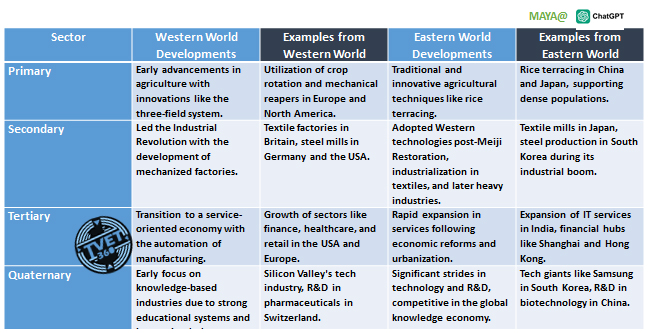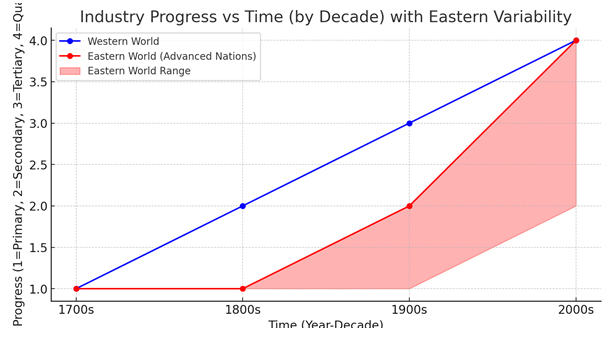7/02 - Industry History
 Nana Azhar
Nana Azhar
The history of industries traces the evolution of human production from simple craftwork to complex manufacturing systems. In this journey, the West and the East have followed distinct paths shaped by cultural, economic, and technological influences. Historically, the Western world demonstrated earlier maturity in the secondary and quaternary sectors, driven by the early onset of the Industrial Revolution and a robust framework for innovation and education. This early lead allowed Western countries to establish a strong industrial base and later transition smoothly into service and knowledge-based economies.
In contrast, the Eastern world showed remarkable agility and adaptability. Although it entered the industrial phase later, rapid industrialization, especially post-World War II, and aggressive economic reforms in the late 20th century enabled quick catch-up and growth. The Eastern world's recent focus on technology and R&D has propelled it to a competitive position in the quaternary sector, reflecting a maturing industry profile that increasingly parallels the West's, showcasing a convergence in industrial maturity across global regions.
The following table summarizes the evolution of industries through primary, secondary, tertiary, and quaternary sectors in both the Western and Eastern worlds, highlighting key developments and examples:

The graph below demonstrates the industrial evolution from the 1700s to the 2000s in both Western and Eastern regions. The West progressed through primary to quaternary sectors, with European countries now thriving in service-based economies and high-tech industries, supported by strong educational, legal, and investment frameworks. Conversely, many Eastern nations, particularly in South and Southeast Asia, remain focused on primary and secondary sectors, working towards enhancing infrastructure and educational systems for further industrial advancement.

This visualization effectively captures the disparity within the Eastern world, contrasting with the more uniform progression through industrial sectors observed in Western Europe. This nuance helps in understanding the regional differences and economic diversities between and within these global regions.
Thank you for your time ❤️
Subscribe to my newsletter
Read articles from Nana Azhar directly inside your inbox. Subscribe to the newsletter, and don't miss out.
Written by
